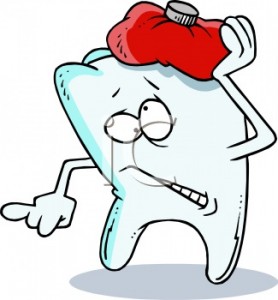 What is dry socket and how can one prevent it! It is rather a painful condition that can occur following teeth extractions and hence the main concern on mind of many patients. However, in our experience dry socket is a completely preventable complication.
What is dry socket and how can one prevent it! It is rather a painful condition that can occur following teeth extractions and hence the main concern on mind of many patients. However, in our experience dry socket is a completely preventable complication.
Dry socket is considered a wound healing complication where the initial blood clot formed following tooth extraction becomes inflamed, unstable, and eventually lost leaving the socket bone dry and exposed. A significant and escalating pain 3-5 days after a tooth extraction may be indicative of a dry socket. It is treated with antibiotics, oral saline rinses, and placement of a medicated-packing for 2-3 days. The socket then gradually heals with secondary intention (growth of tissue from the sides) and pain typically diminishes over 7-10 days.
The most common cause of dry socket is traumatic extraction techniques with excessive gum tissue flaps, excessive bone removal during tooth extraction, and lengthy procedures. These can devitalize surrounding bone and gum tissue leading to poor healing, infection, or dry socket. Another common cause is poor patient compliance to post-operative instructions, particularly those who continue to smoke, spit excessively after extraction, or have poor oral hygiene.
IN OUR EXPERIENCE, DRY SOCKET IS A COMPLETELY PREVENTABLE COMPLICATION.
Here are what the oral surgeon / dentist can do to prevent dry socket:
- Use atraumatic tooth extraction techniques using minimally invasive approaches, minimal gingival manipulation, minimal bone removal, gentle elevation of the tooth the be extracted, and shortening the length of surgical time
- Thorough irrigation and gentle curettage of the extraction site by the surgeon
- Placement of gelfoam (a type of collagen sponge) in the extraction site to help stabilize the blood clot
- A single suture to stabilize the gelfoam and blood clot in the socket
- Provide detailed post-operative instructions
Here are what patients can do to prevent dry socket:
- Follow the post operative instructions
- No smoking
- No spitting following tooth extraction
- Avoid using straws within 24 hours after extraction
- Frequent oral rinses with salt water starting day following surgery
- Post-operative antibiotics (Note: this is a prophylactic measure and its effectiveness to prevent infection has not been proven from evidence-based literature)
As with all surgical procedure, minimally invasive techniques and gentle manipulation of tissues help to speed up overall recovery with less pain and swelling. In-addition they help to prevent complications such as infection and in the case of teeth extractions- dry socket.
Dr. H. Ryan Kazemi is a board-certified oral and maxillofacial surgeon in Bethesda, MD